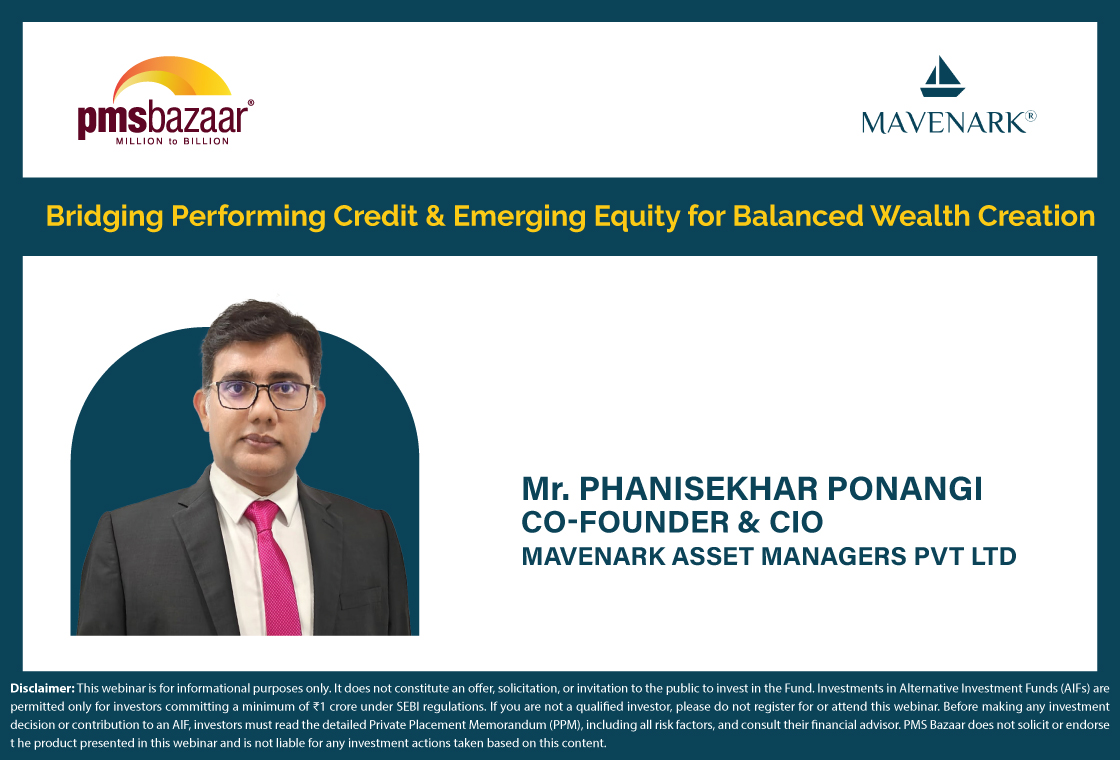PMSes have nearly 200 unique stocks in their disclosed portfolios, with single-stock weight as high as 32% allocation in a strategy. In this article, we take a detailed look at the most-owned stocks, unique stocks, sectoral preferences and stock allocation weights in May 2020.

'If you are not willing to own a stock for 10 years, do not even think about owning it for 10 minutes' --- this is one of the most popular quotes in the investing world. Walking the talk, portfolio managers often wait patiently for a stock to reach their optimum value without being distracted from inflows and outflows. At PMS Bazaar, we track 127 PMSes to bring a deep-dive into their top 5 holdings. In this article, we take a detailed look at the most-owned stocks, unique stocks, sectoral preferences and stock allocation weights in May 2020.
Stocks universe
According to data available of 127 PMSes, portfolios have 635 securities that can be counted as top holdings. Do note that these 635 securities are not unique; the same stock can be present in multiple portfolios.
Coming to unique stocks, their number is 196. As many as 59 unique stocks (30.1%) fall in the Large Cap segment. The Mid Cap segment has 60 unique stocks (30.6%) and the Small Cap club has 77 unique stocks (39.3%).

Most-owned stocks
A typical equity buyer's decision is usually heavily influenced by the actions of acquaintances, neighbours or relatives. Thus, if everybody around is investing in a particular stock, the tendency for potential investors is to do the same. However, in the investing world, there are other factors at play. Valuations, business potential and management matter a lot. Plus, PMS strategies have to operate under an investment philosophy/mandate which may limit the number and type of stocks they hold.
According to the PMS Bazaar study, the 10 most-owned stocks are a combination of 7 Large Caps and 3 Mid Caps. In the Large Cap space are HDFC Bank (46 portfolios), ICICI Bank (30), Reliance Industries (29), Divi's Laboratories (18), Bharti Airtel (17), Infosys (14) and Hindustan Unilever (13). The most-owned stocks in the Mid Cap segment are Aarti Industries (14 portfolios), P I Industries (11) and Sanofi India (11).

A month on month comparison will show that there is not much change in the top-4 stocks. May 2020 saw stocks like Hindustan Unilever come back in top-10. Sanofi India appears a new entrant. Do remember that entering and exiting top-10 most-owned stocks does not necessarily mean they are top-10 most-bought stocks too. At a portfolio level, top holdings can move up or down due to change in market capitalization as well.
Stock talk, sector preferences
Let us also take a look at the most-owned stocks in 3 segments viz. Large Cap, Mid Cap and Small Cap.
The Large Cap list as of May 2020 includes HDFC Bank, ICICI Bank, Reliance Industries, Divi's Laboratories, Bharti Airtel, Infosys, Hindustan Unilever, Kotak Mahindra Bank, Avenue Supermarts and HDFC. Notice the preference for financials in the Large Cap list; many of the stocks are in benchmark indices. Financials remains the most influential sector in the indices, though their clout has gone down due to Covid-linked correction. Till the market discovers the leaders of the next long-term rally, financials appear to be the status-quo choice.
The Mid Cap list for the month includes Aarti Industries, P I Industries, Sanofi India, Abbott India, Dr Lal Pathlabs, Whirlpool of India, Alkem Laboratories, Bata India, Coromandel International and Indraprastha Gas. The overwhelming rally in pharma and healthcare stocks clearly reflected the top-10 most-owned Midcap stocks, with this sector bagging 4 of 10 slots.
The Small Cap most-owned stocks list in May 2020 is dominated by specialty chemical/chemical-linked company and pharma stocks. The most popular is Alkyl Amines Chemicals, followed by APL Apollo Tubes, Granules India, Dixon Technologies India, GMM Pfaudler, Deepak Nitrite, Vaibhav Global, Indian Energy Exchange, JB Chemicals & Pharmaceuticals and Astrazeneca Pharma.
Allocation tit-bits
When PMS portfolio managers show conviction in a stock idea, they tend to take higher concentration in them. The PMS Bazaar study showed such tendencies remaining in the May 2020 portfolios.
Single-stock allocation weight is as high as 32.25% for Aarti Industries. The next in this list are Alkyl Amines Chemicals (21.93%), Fortis Healthcare (20.16%), JK Paper (20.00%), Bajaj Finance (19.05%), Sun Pharmaceutical Industries (16.90%), GMM Pfaudler (16.27%), Avenue Supermarts (15.30%), Divi's Laboratories (15.15%), and Abbott India (14.88%). A high level of conviction to a single-stock may be because of investment philosophy or mandate.

Typically, thematic or sectoral PMS strategies are known to keep high single-stock allocation in portfolios. In terms of lowest allocation to single-stock, we found 10 names. The lowest single-stock allocation is Tube Investments of India (1.01%), Deepak Nitrite (1.07%), Reliance Industries (1.13%), Alkyl Amines Chemicals (1.23%), Bharti Airtel (1.27%), Tata Consumer Products (2.15%), SRF (2.55%), Ahluwalia Contracts (3.00%), Sudarshan Chemicals (3.04%) and Coromandel International (3.06%). Mind you that these low allocations could be a reflection of the plan to diversify the portfolio holdings.
Recent Blogs

The Secret Sauce of Quant PMS
PMS Bazaar recently organized a webinar titled “The Secret Sauce of Quant PMS,” which featured Mr. Vivek Sharma, VP & Investment Head, Estee Advisors Private Limited.

Bridging Performing Credit and Emerging Equity for Balanced Wealth Creation
PMS Bazaar recently organized a webinar titled “Bridging Performing Credit and Emerging Equity for Balanced Wealth Creation,” which featured Mr. Phanisekhar Ponangi, Co-Founder and CIO, MavenArk Asset Managers Pvt Limited. This blog covers the important points shared in this insightful webinar.

Equity PMS performance steady in June; over 99% in green as rally broadens
Best schemes log 10-19% gains, but the overall extent of outperformance vs. benchmarks was lower compared to May

June Brings Steady Gains for AIFs; Long-Only Strategies Maintain Lead
126 of 129 AIFs ended in the green; long-only funds averaged 3.75%, while long-short peers delivered a modest 2.18%

Alpha from Simplicity: The Power of Vanilla Investing
PMS Bazaar recently organized a webinar titled “Alpha from Simplicity: The Power of Vanilla Investing,” which featured Mr. Sheetal Malpani, Chief Investment Officer and Head of Equity, Tamohara Investment Managers. This blog covers the important points shared in this insightful webinar.

Sectors to watch and Sectors to Dodge – Alternates Universe Webinar Series
PMS Bazaar recently organized a webinar titled “Sectors to watch and Sectors to Dodge” which featured Mr. Darshan Engineer, Fund Manager at Sundaram Alternate Assets and Mr. Sandeep Tulsiyan, also a Fund Manager at Sundaram Alternate Assets, who had a discussion with Mrs. Reshmi Chakraborthy from Sundaram Alternate Assets. This blog covers the important points shared in this insightful webinar.

Mid and Small Caps: Driving India’s $5 Trillion Pathway
PMS Bazaar recently organized a webinar titled “Mid and Small Caps: Driving India’s $5 Trillion Pathway,” which featured Mr. Achin Goel, Fund Manager at Bonanza.

Equity PMS strategies shine in May; 9 in 10 Beat Nifty 50 TRI as small cap surge lifts all boats
Robust sectoral rotation and smart stock selection power one of the strongest alpha months for PMS managers

